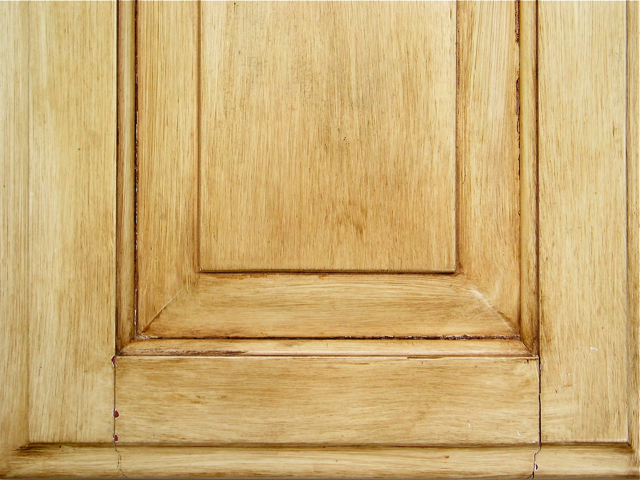We may receive a commission when you use our affiliate links. However, this does not impact our recommendations.

I used glaze over white paint to create this aged look.
A common topic in woodworking magazines is how to make new wood look old. The two ways most often suggested are to beat up the wood with chains or keys on a key ring or to unevenly sand through several layers or different colored paint. One of these methods may work for what you want to achieve, but it may not.
To successfully make new wood look old, you need to have a clear idea of the look you’re after. It might involve creating artificial wear or color differences just described, but it also might involve color change that occurs over time (the wood or finish being bleached or darkening) or dirt accumulation. There are lots of ways to age wood.
The easiest method of getting what you want is to look at old furniture or woodwork and copy this example.
Here are some tips for achieving different effects.
For color change, use stains, glazes, toners and bleaches to recreate the lightening, darkening and color shifts that occur naturally in various woods and finishes.
For physical wear, use chains, keys, kitchen utensils or other tools to make dings and scratches. Vary the shapes and sizes so the marks aren’t alike and unnatural. Use rasps, sandpaper and wire brushes to wear away wood on rungs and other parts that might have been worn by many years of use. Very importantly, if the wear should appear as if it occurred under a finish, create the damage directly on the wood. If the wear should appear as if it occurred on top of a finish, create the damage after you have applied at least one coat of finish.
For fake wear done partially or entirely in the finish, use glaze in between coats of finish. Look at factory furniture made since the 1960s to see lots of examples of this.
For dirt, use brown glaze, brown wax or clear wax with rottenstone added to imitate natural dirt accumulation in recesses. Apply the material and wipe it off the high spots. Use steel wool or an abrasive pad to remove some of the finish and coloring from high spots.
There are probably countless ways to make new wood look old. Get an example, or picture of an example, you like, and use your imagination to figure out how to imitate it.
Here are some supplies and tools we find essential in our everyday work around the shop. We may receive a commission from sales referred by our links; however, we have carefully selected these products for their usefulness and quality.









One of my furniture store customers used to carry a line of furniture with a finish called “dusty wax” that was wax, rottenstone, and thinned with mineral spirits. My wife always called it “insufficient housekeeping.”
How do you get the ashy Gray look of barn siding
Check out Alley Picked’s video: How to make your own barnwood
https://youtu.be/mfZ95v9ubOU
I haven’t tried this yet, but it looks amazing.
The youtube video Dave suggests is a good place to start. Look around youtube for more ways. I can’t do better than this and Keith.